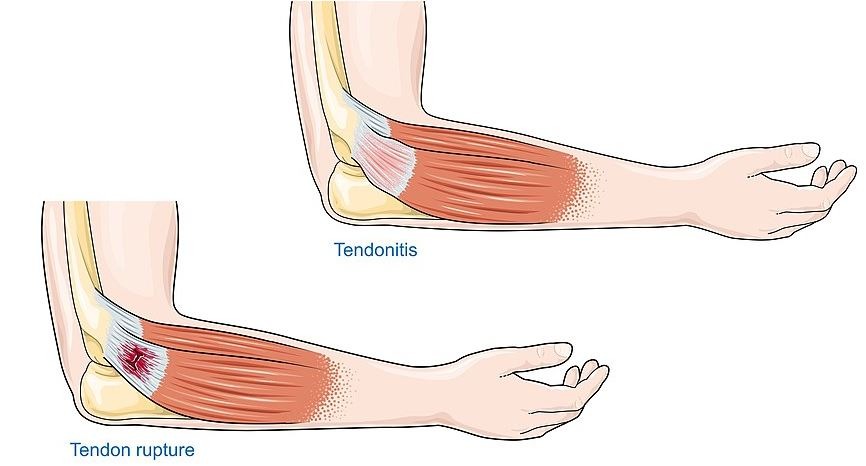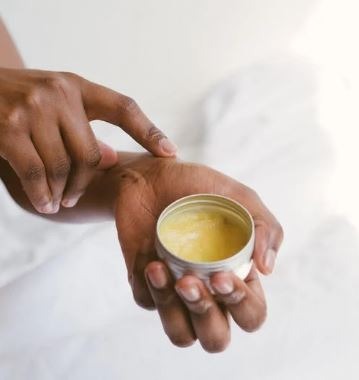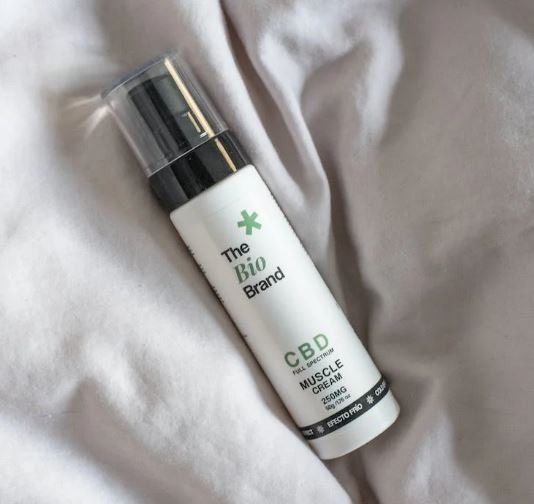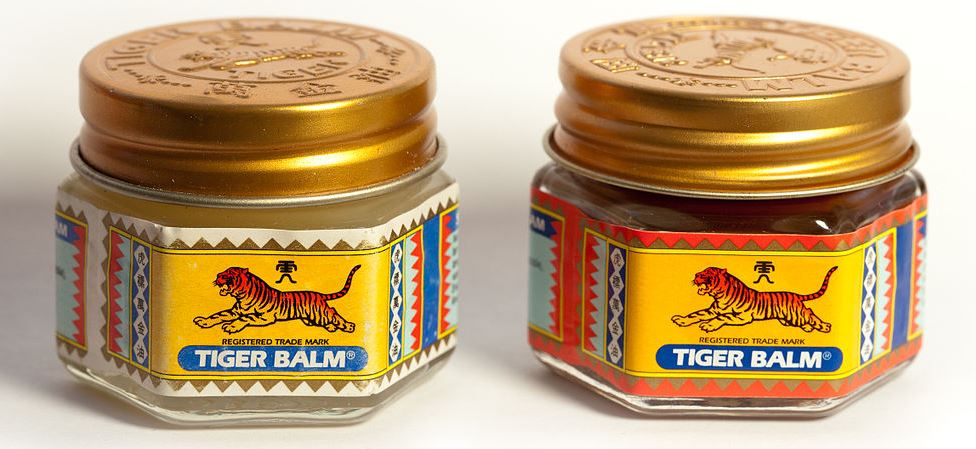One of the most unpleasant stress-inducing causes is hurting muscles and joints. About everyone periodically needs sweet respite from minor aches and pains, whether they were overexercised during their workout, spent the afternoon lifting big boxes, or suffer from the torment of arthritis. Aches, pains, stiffness, and discomfort can occur every day. Additionally, attempting to control or lessen these unpleasant feelings doesn’t always provide relief. Creams that reduce discomfort are the answer; however, presenting the list of pain relief creams, here is a quick overview of what tendonitis is.
NOTE: Always consult with your doctor for on-going medical issues.
What is Tendonitis?
A tendon, one of the thick, fibrous cords that connect muscle to bone, can become inflamed or irritated. Just outside a joint, the condition causes discomfort and tenderness. Tendinitis affects any of your tendons, although it most frequently affects the joints in and around your shoulders, elbows, wrists, knees, and heels.
Just like arthritis, it is a crippling and chronic ailment that affects an estimated 52.5 million people in the United States. However, several over-the-counter remedies are available, including oils, creams, lotions, gels, and lotions containing anti-inflammatory, anesthetic, and other pain-relieving characteristics.
According to Dr. Connor, tendonitis can develop when a tendon is subjected to a solid or violent strain or when someone uses their body in an unfamiliar manner. “Sports, gardening, house renovations, cleaning, or repetitive movements are common hobbies that induce tendinitis.”
Everything You Need to Know About Over-the-Counter Pain Relief Cream
These over-the-counter topical pain relievers are made of several chemicals that work differently to reduce mild to moderate pain. Others chill off while others warm up. Others block pain receptors so they can’t communicate pain signals to your brain, while some lessen inflammation.
When buying an over-the-counter pain relief cream, you should search for pain-relieving components that are effective for arthritis or tendonitis to identify the creams that may work the best. Healthline states that the following elements are often what make over-the-counter topical treatments effective:
- Salicylates, which lessen irritation, inflammation, and edema.
- Eucalyptus oil, cinnamon oil, menthol, and camphor are examples of warming compounds. These substances are called counterirritants because they chill or warm the skin to prevent your brain from sensing pain.
- Capsaicin blocks pain receptors in the skin to lessen pain. The naturally occurring compound in chili peppers called capsaicin gives them their hot bite. Capsaicin induces a heat sensation on the skin when administered topically, which might initially be strong. The capacity of capsaicin to stop pain signals from passing between inflamed nerves and the brain, however, provides the most significant relief. Before you get all the advantages of capsaicin cream, you may need to apply it consistently for a few days. These lotions are particularly efficient at treating joint pain and diabetic nerve discomfort.
- Anesthesia numbs the treated region and blocks pain signals from reaching the brain. Lidocaine is a topical anesthetic included in over-the-counter painkillers. It works well to relieve musculoskeletal pain from arthritis or overuse injuries.
Moreover, it can be challenging to select the best cream for tendinitis. However, if you consider these things, your job will be more straightforward. You might include the following factors in choosing your pain relief cream:
- Product Quality: When making a purchase, one of the most crucial elements to consider is the product’s quality. Nobody would like a cheap or readily damaged item. They will even pay a slightly higher price for a quality product.
- Consult your physician about combining treatments. Sometimes all you need is a pain cream or gel. Ask your provider for advice on how to make your topical work harder if that isn’t enough. According to Dr. Mikhael, treating acute pain may benefit from topicals and oral drugs like acetaminophen or NSAIDs.
- Product availability: To replace obsolete products, new ones are often introduced. Most likely upgraded in some way, this new product might offer unique features. It should be available in the vast market so you can buy it wherever you are.
- Seller’s Top Picks Rank: You must have a top-notch product, be well-known, and expand. Both goals are essential. Based on its expanding user base, the product is successful. Producers must offer improved after-sales support and quality because more customers are making purchases.
- Customer Reviews: You should trust higher ratings. Previous customer review matters; it will guide you if a particular product works for you too, and you will have a background on what to expect from the product.
Best Over-the-Counter Pain Relief Cream
1. Voltaren Topical Arthritis Pain Relief Gel
The triple-tasking gel from Voltaren does three things. It provides all-around assistance for arthritis joint discomfort by easing pain from the condition, enhancing mobility, and reducing stiffness. Diclofenac gel, a non-steroidal anti-inflammatory medication, is an ingredient in this cream that can target painful areas by acting underneath the skin’s surface. This chemical efficiently reduces pain by acting on the inside out. The non-greasy nature of Voltaren’s Topical Arthritis Pain Relief Gel prevents it from making your feet or any other area slippery or sticky. Remember that topical NSAIDs may not be recommended if you have a medical condition, are using blood thinners, or have been advised not to use oral NSAIDs. It is best to consult your doctor before using the product.
2. BENGAY Pain Cream Extra Strength
According to Medhat Mikhael, MD, minor aches and pains or the occasional sprain or strain react to creams like BENGAY, which contains a local anesthetic and a calming agent. He explains that using a local anesthetic to numb the area “has an analgesic impact with cold and a vasodilating effect with heat that enhances healing and blood flow to the area.” What else distinguishes BENGAY as the top cream for pain treatment overall? The non-greasy composition is pleasant to the touch and won’t leave stains on garments.
3. AcuPlus Cream for Pain Relief
This lotion relieves joint discomfort and contains a unique mixture of 14 organic components. Its soothing, non-sticky, and non-staining smell quickly fades away. This arnica cream provides relief right away. Arnica, MSM, vitamin B6, glucosamine, and magnesium are a few active constituents in this muscle pain relief lotion. This over-the-counter lotion for muscular pain treats both joint and muscle discomfort. The stiffness and swelling in the neck, shoulder, elbow, back, hip, knee, and foot can also be treated with it to ease nerve pain.
4. Biofreeze Lotion
According to Dr. Mikhael, topicals like Biofreeze that feel cold on the skin can instantly relieve pain. Menthol is an ingredient in the non-greasy, NSAID-free pain treatment that reduces discomfort by desensitizing nerves and decreasing blood flow to sore or wounded areas. Additionally, it will probably be more relaxing than a bag of frozen peas. According to a study, menthol is superior to the ice for relieving muscle pain and discomfort.
5. Tiger Balm Rub for Arthritis
Tiger Balm Arthritis Rub, a combination of natural herbal elements, offers muscular aches and joint pain caused by arthritis safely, quickly, and affordable manner. Look for something that has menthol and camphor, two chemicals in this product, if you’re exhibiting symptoms like redness, warmth, and swelling. These chemicals produce cold sensations that serve as pain diversion. This topical anti-inflammatory lotion isn’t oily and doesn’t include alcohol, which can dry up the skin. It comes in an easy-to-use, arthritis-friendly pump. It can be used to treat superficial pain, such as shingles, in addition to deep discomforts caused by aching muscles. However, it shouldn’t be applied to irritated, inflamed, reddish, or dry skin or to skin that is damaged or has open sores.
Conclusion
The active ingredients of a topical treatment should be considered when choosing which ones are ideal for you. Different active components, which change from product to product, can be found in topicals. It could be wise to try a product with an additional active ingredient if you discover that one isn’t working for you. Basically, it comes down to preference. “I think you need to test and find what works best for you,” Dr. Rosian advises.





